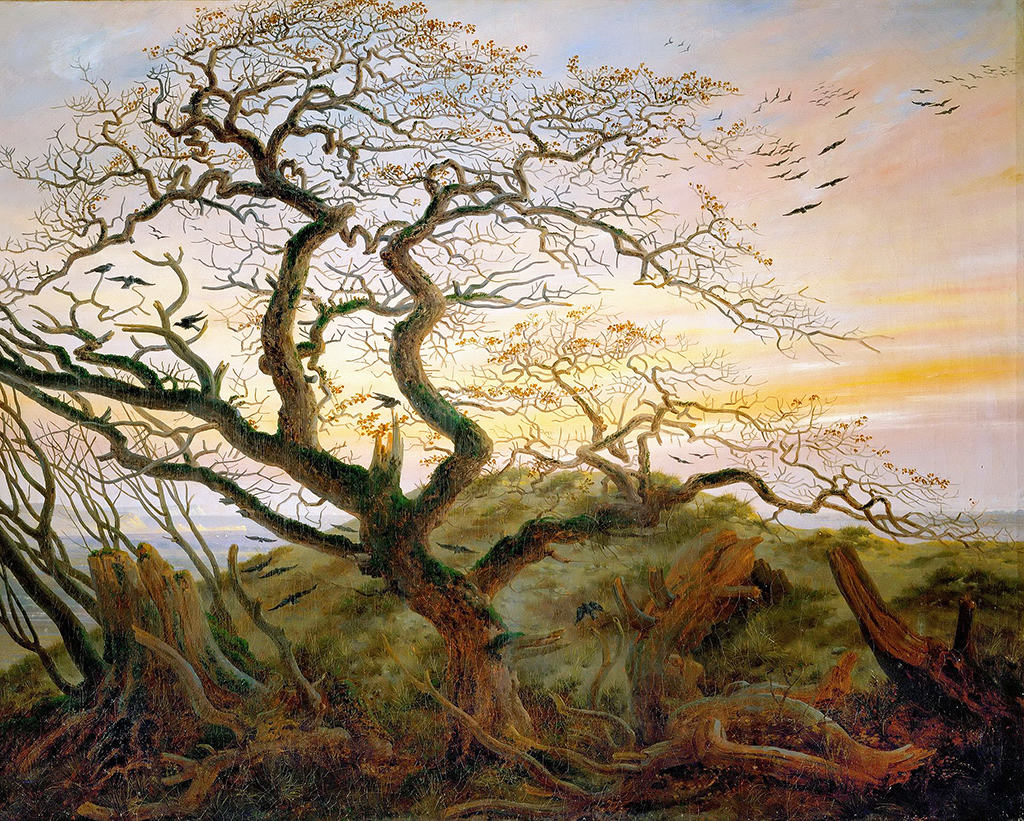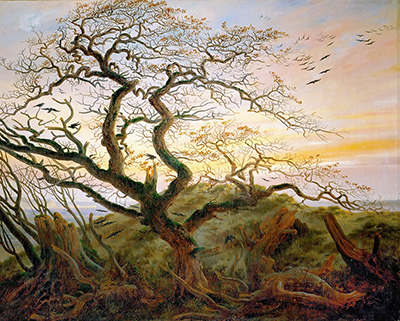This is an 1822 oil painting created by Caspar David Friedrich on the Rugen Isle. It was later acquired in 1975 by the Musee du Louvre and has since been referred to as the most creative piece. Considered one of Friedrich's most compelling pieces of art, The Tree of Crows depicts a twisted oak tree.
The oak has the shape of a rhombus. It is brought out as bear with few dead leaves against the sky. As shown, the tree comes across as heavily tousled by the wind while weathering is rendered masterfully with each stroke.
The Reflection of Nature
It is founded upon strong colour tones and brings out a pessimistic mood. The prescription at the back of this painting points out the hill to be German’s Hunengrab, a prehistoric burial site. At a distance, the viewer can notice an ocean and Cape Arkona’s chalk cliffs. On the tree are two perched crows, and a flock descending towards it.
In the foreground, which is darker than the background, notice a hacked trunk and a grounded stump of another tree. This piece draws a lot of inspiration from one of Friedrich’s 1809 paintings. Here, branches have been added towards the left side while others have been stretched to take on a dramatic appearance. The forms of the oak are contrasted with the chromatic clouds' serene layers.
Some interpretations highlight that the foreground represents death, while the distant sky offers comforting beauty that promises redemption in the afterlife. Here, the landscape delivers a silent religious message, whereby each element is made to contribute. Notice the different naturalistic motifs painted, showing symbols of divine revelation.
Romanticism
It could be interpreted to be a man facing nature and who then confronts this condition and finally finds his destiny. The many branches depicted are viewed as flailing arms. Before this painting, the German romantic artist, Friedrich, had created a single oak that seemed to be dominant. It was a subject of two vertical compositions. In the painting, the tree appeared to stand dominantly to be noticed, whereas, in this painting, desperation is the highlight.
This is one of the pieces produced with a vivid image and maximum colour accuracy and resolution. In many landscape paintings, ravens and crows depicted cameo appearances. Casper, however, had a romantic way of giving them star roles and doing it so well. In this painting, the crows are made to do what they are good at during dusk. He plays tricks in this drawing with the eerie light and wizened trees, making them appear sinister.
With the exceptional degree of detail and accurate transitions of colour gradients, The Tree of Crows appears realistic more than any other painting done by Friedrich. The painting largely brings out the scene most encountered by the artist in his work, with its typical German romantic perspective. Its composition comprises simple form and has a strong coherence as shown by the diffused light. The horizontal and vertical lines are well balanced, with the environment showcased in an atmosphere of meditation and serenity. The pick of colour of strokes may be limited but is chosen with great subtlety.





